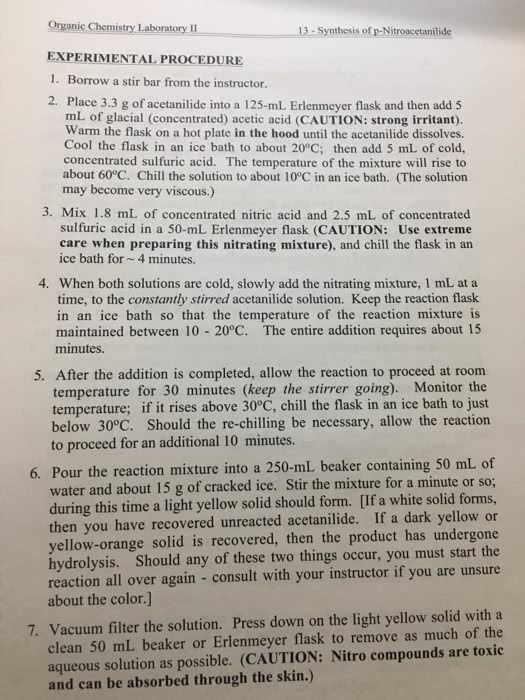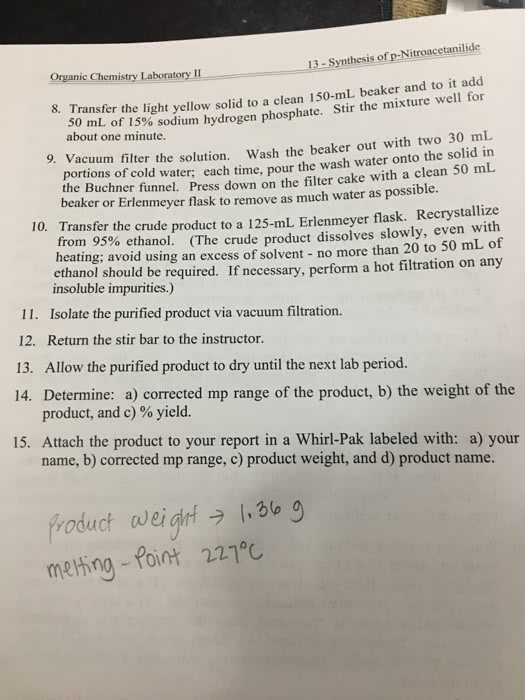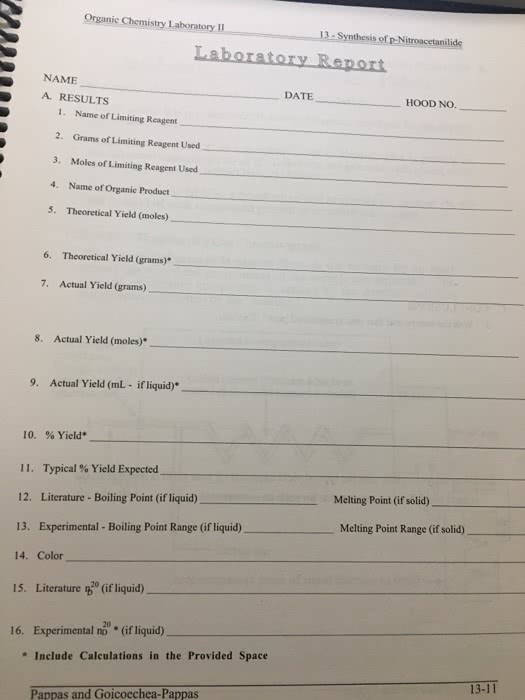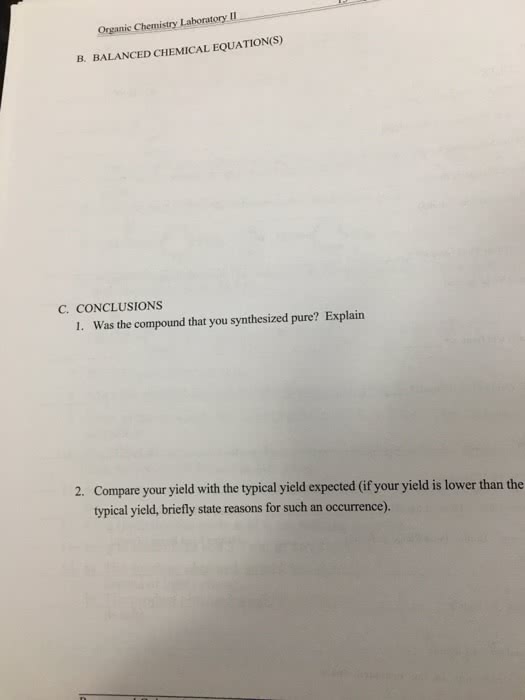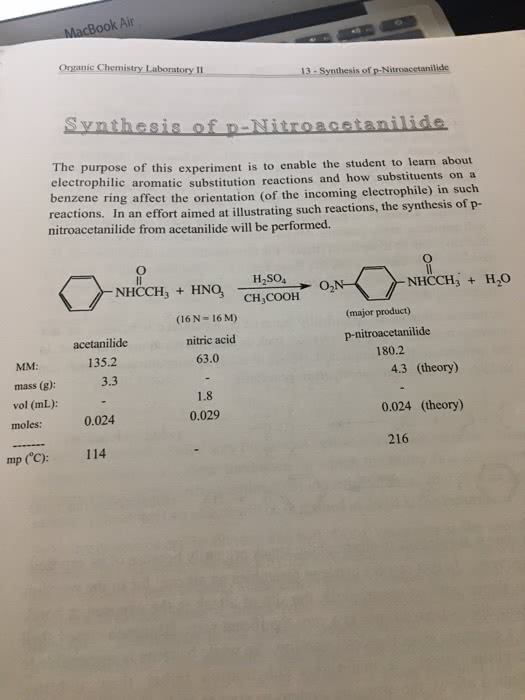CHM 1321 Lecture Notes - Lecture 6: Acetanilide, Regioselectivity, Nitric Acid

Experiment 6: Regioselective Nitration of Acetanilide
Date Performed: March 30, 2106
Date Submitted: April 6, 2016
Alexa Kim
8181530
Partner: Meghan Chapados
8223004
TA: Chris Demone
find more resources at oneclass.com
find more resources at oneclass.com

Procedure:
Refer to the procedure from the lab manual form page 53-54 of “Experiment 6:
Regioselective Nitration of Acetanilide”
Reaction Mechanism:
find more resources at oneclass.com
find more resources at oneclass.com

Observations:
Creating the Reaction Mixture:
•Acetanilide is a solid product that is made up of light brown flakes
•Sulphuric acid is a clear and colourless solution
•Nitric acid is a clear and colourless solution
•When the acetanilide started mixing with the sulphuric acid the mixture turned to a
clear, light brown solution
•When the acid mixture was added to the flask the solution turned to a dark brown
colour
Isolation of Crude Product:
•When the reaction mixture was added to the icy water the solution turned to a bright
yellow colour
•After completing the suction filtration a yellow chalky product was formed
Recrystallization:
•When the crude product was dissolved in the boiling ethanol a clear, yellow-brown
mixture formed
•When the solution was set to cool after a little while a yellow product formed
•After completing the suction filtration a yellow chalky product was formed
Results:
Table 1: Table of Reagents
Reagent
MW (g/mol)
Amount (g or mL)
Density (g/mL)
Moles (mmol)
Acetanilide
135.17
1.0 g
1.12
7.40
Sulphuric Acid
98.08
6.2 mL
1.84
34.3
Nitric Acid
63.01
0.9 mL
1.42
20.3
Table 2: Quantitative Data of Purified Product
Starting Mass
1.33 g
Final Mass
1.2 g
find more resources at oneclass.com
find more resources at oneclass.com

20
CHM 1321 Full Course Notes
Verified Note
20 documents
Document Summary
Refer to the procedure from the lab manual form page 53-54 of experiment 6: Isolation of crude product: when the reaction mixture was added to the icy water the solution turned to a bright yellow colour, after completing the suction ltration a yellow chalky product was formed. Table 5: ratios of ortho, para, meta and dinitro. Therefore there is an average ratio of 1:60:16:23 of the meta isomer, ortho isomer, para isomer and the dinitro in the mixture respectively. Screenshot of the peak areas used in the calculation to nd the percentage areas. Screenshot of the graph used to nd the areas. Theoretical yield of isomers = 0. 00740 mol (180. 16 g/mol) Theoretical yield of benzoic acid = 1. 33 g. Percentage yield = (actual yield / theoretical yield) x 100. Therefore the percentage yield of the puri ed product is 90. 2% Calculation of the percentage area of the ortho isomer in the crude product:


